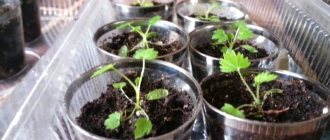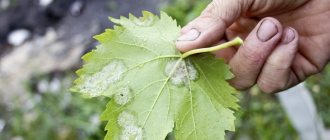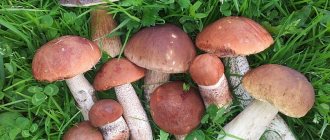About hacienda » Tips
Adviсe
It is immediately necessary to clarify that in addition to F1 and GMO hybrid seeds, there are also varietal vegetable seeds.
First, let's define what varietal seeds are.
A variety is a plant with characteristics and qualities unique to it that do not change over time.
Let's take tomatoes as an example.
You purchased varietal seeds, plant them, grow them and get a harvest. Next, collect seeds from the harvest and plant them again next year. As a result, exactly the same tomato plant grows. All the characteristics and distinctive qualities of this variety are preserved, and with the same yield.
Conclusion - you can collect varietal tomato seeds endlessly. Grow it every year, then collect the seeds and plant it the next year.
All its qualities and varietal characteristics will remain unchanged. This is the only advantage of varietal seeds. Well, the downside is that they are not resistant to most diseases and have low yields compared to F1 hybrids.
Related article:
A few things you should do with your plants before frost sets in
Why is this being done?
Let's explain using tomatoes as an example. One line of tomatoes is cold-hardy, but not resistant to any disease. And the other, on the contrary, is resistant to diseases, but does not tolerate the slightest cold snap. As a result of crossing, genetically strong offspring appear, which have inherited resistance to low temperatures and diseases from their parents.
That is, hybrid seeds differ from ordinary, varietal seeds in better resistance to diseases, resistance to external adverse factors, and a friendly and rich harvest.
Having understood the concept of hybrids, you need to know the following. Having received an excellent harvest and collected hybrid seeds from it, it will be impossible to grow from them a plant with the same characteristics and quality of fruits the next year. Planting seeds from an F1 hybrid you have grown will give you many different options. Among them there may be infertile, unproductive, and maybe productive. And all because heterotic hybrids do not retain the properties of the mother plant.
On the contrary, you can safely collect seeds from the varieties of vegetables you like. In the next offspring, they retain all the properties: productivity, color, taste, appearance, smell.
Pros and cons of hybrids
Next, about the pros and cons of hybrids. A huge plus is that hybrids in most cases do not require additional pollination.
The second is that they are very productive, several times higher than varietal individuals.
The third quality is their resistance to most diseases of a certain plant species.
The only disadvantage of F1 hybrids is that the seeds collected from the fruits, when planted later, do not retain the maternal genes; as a result, a completely different species will grow, but not the hybrid from which the seeds were collected.
Related article:
Effective ways to drive away wasps
Variety or hybrid - what is their difference?
When buying seeds, some choose them based on their appearance in the pictures, some carefully study the description of the fruit, others simply look at the price. There are so many different seeds, and how do you figure out which one is best? Meanwhile, the only significant difference between them is that some are hybrid (there is an F1 sign on the package), while others without this sign are varietal. What is their difference from each other? What are the advantages and disadvantages of each?
Variety - a group of plants with characteristic characteristics, selected by selection. Moreover, although varietal plants are similar in their external characteristics, they are very different at the genotype level. Varietal seeds retain their parental characteristics and can be propagated with their own seeds from year to year.
A hybrid is a fruit created by crossing several parent varieties. This is done specifically to improve certain qualities. For example, increase shelf life, resistance to adverse weather conditions and diseases. Such plants all have the same genotype. This means that their descendants will not have all the advantages of the original plant.
Therefore, when choosing seeds in a store, pay attention to the presence of the F1 mark. If it is available, then this is a hybrid.
What are GMO seeds
This abbreviation stands for genetically modified organism.
There is also a name - transgenic organism. It is created by artificial introduction, namely, the transfer of a foreign gene into a molecule of a foreign, completely different type of DNA carrier of hereditary information. Simply put, this is the crossing at the genetic level of one species with completely different species of both plants and animals with DNA plants and vice versa. Related article:
How to fight weeds: 6 best herbicides that are guaranteed to help
For example, scorpion genes are introduced into potato cells to get rid of various insects that eat them. Thus, the harvest is clean and abundant, since no pest attacks it. And, as you can understand, genetically modified plants cannot be obtained through pollination, but this is done only in laboratory conditions.
In order to obtain genetically modified plants, a lot of research and various experiments are carried out, which require both time and large investments of money.
Therefore, you simply cannot buy seeds with GMOs of various plants in an online store, or in regular gardening stores, since these seeds will be very expensive.
What is better - a variety or a hybrid?
Hybrids
Advantages:
- They have high productivity,
- Transport well
- Resistant to various diseases,
- Fruits of the same shape and size,
- some hybrids are self-pollinating, and this is another significant plus.
But with all the positive qualities, hybrids have disadvantages:
- The cost of hybrid seeds is significantly higher than varietal seeds;
- In order for the seeds to reveal their declared qualities, they need to be provided with favorable conditions and proper care (nutritious soil, optimal temperature, timely watering, fertilizing, weeding, etc.).
The hybrid is not adapted to environmental changes at all, since it was bred in ideal conditions. Any discrepancy between actual conditions and expected conditions is not to the taste of the plants. They grow worse and bear fruit.
Varieties
Varietal plants, on the contrary, at the genetic level accumulate over the years and pass on to their offspring acquired knowledge about climate, soil, nutrition, even about the area where they grow. Moreover, they tolerate sudden changes in growth safely and quickly adapt to survive the unfavorable period. The varieties are less demanding, unpretentious, and not so dependent on agricultural technology, so it will not be scary if they are not watered or fertilized on time.
The chemical composition of the variety is closer to wild plants. And wild plants, as you know, are champions in the content of nutrients. Varietal fruits are much richer in vitamins and microelements compared to hybrid ones. This example is well illustrated by wild strawberries. Compared to the garden variety, its fruits are sweeter and tastier. And strawberries from your own garden are tastier and healthier than tasteless imported berries from the store. It turns out that the obvious advantages of varieties are
- in taste,
- ability to reproduce by seeds,
- preservation of acquired quality characteristics in the next generation,
- unpretentiousness to growing conditions,
- less dependence on agricultural technology,
- content of more vitamins, microelements, and other biologically active components.
To be fair, the disadvantages of the varieties cannot be noted. Firstly, all varieties of cucumbers are bee-pollinated, which is not always convenient. And unlike hybrids, varietal cucumbers are less prolific, outgrow faster, and often taste bitter. Secondly, and this is a significant drawback, it is very difficult to collect high-quality seeds from cross-pollinated crops. Plants are pollinated and lose their original properties. However, if plants are planted isolated from each other, this may not happen.
What are hybrid seeds?
So let's start from the beginning. Hybrid seeds are not chemistry or the machinations of ubiquitous geneticists. This is painstaking work of breeders that sometimes takes years. And the strange “overseas” letter F and number 1 are deciphered as follows:
- F – from Italian “Figli” (children)
- 1 – designation of the first generation.
Hybrids in general and such hybrids in particular are obtained by artificial pollination of different varieties of the same crop. This is a labor-intensive and time-consuming task. Breeders have to spend a lot of time selecting so-called parental pairs that will result in good offspring.
What are hybrids
On packages of seeds, next to the name you can see the designation F1. It indicates that this is not a variety, but a hybrid form. The abbreviation stands for simply:
- F – the first character of the word children (filii);
- 1 – first generation.
Hybrid tomatoes are superior to varietal tomatoes in yield, early maturity, and disease resistance.
Reference! The cost of hybrids is higher. The explanation is simple - the work to obtain them is manual and lasts several months.
Their superiority is explained simply. A hybrid form is obtained by crossing 2 or more parent forms with pronounced varietal properties. The best qualities go to the new form. Hybridization is carried out in protected ground, the work is manual.
How to obtain seeds of F1 hybrids. How do you get hybrid seeds?
Sterility is the main condition when breeding hybrid seeds; the desired crops must be isolated from other vegetable plantings, located in a greenhouse or separated by a dense strip of bushes.
A gardener, for example, likes two high-yielding varieties of tomatoes and is ready to grow them every year, but the first has one drawback - it is too tall, and the drawback of the second is the large size of the fruits, which do not fit into cans for preservation. If you combine these two varieties, you get something medium-sized, high-yielding and ideal in fruit shape, superior in characteristics to the parent forms.
To obtain your own seeds of F1 hybrids of nightshade crops, you must correctly perform the pollination technique. Having chosen one parent variety, conditionally the paternal form, in the morning they carefully tear off the ripe stamens (anthers) on the blossoming inflorescences with tweezers and collect them in a glass container. Then, on the selected second variety - the maternal one, the unopened buds are opened with tweezers, the stamens are removed and the stigma of the pistil is pollinated with pollen collected from the paternal plant, opening the closed anthers.
To form a fruit ovary and obtain more seeds, pollen from two anthers of the paternal bush is applied to each flower of the maternal form.
After crossing, all inflorescences are covered with bags made of paper, non-woven material or polyethylene to isolate them from insects. The work carried out must be recorded on tags and attached to the crops, where they indicate the date of pollination and the name of the varieties.
By the evening of the next day, the bags are removed from the peduncles. The result of hybridization will be noticeable on day 4-5; if crossing is successful, the fruit ovaries will begin to enlarge and grow.
From first generation hybrids it is possible to obtain the maximum number of seeds in fruits than from varietal breeding, where most of the seed material is formed only in the first, most developed and strong fruits.
F1 tomato hybrids are capable of producing up to 1800 seeds per fruit, eggplant – 1300, hot and sweet pepper – 700 and 250 pcs. respectively.
Heterotic hybrids grown from the obtained seeds are superior to varietal forms in all respects and are endowed with greater resistance to pathogenic diseases and resistance to negative climatic changes. But seeds from their ripe fruits are no longer suitable for subsequent propagation, since they split during sowing and chaotically display the characteristics of the parent forms, losing all yield qualities and losing fruiting time. And the operation with artificial pollination has to be repeated as the reserves of F1 hybrid seeds are depleted, which are stored much longer than those isolated from varietal forms.
I wish you successful experiments and obtain excellent seeds of F1 hybrids.
What will grow from hybrid seeds. Is it possible to collect seeds from hybrids and what are the risks?
There is constant debate among amateur plant growers about whether seeds are collected from hybrids. This is not surprising - the plants are very attractive in appearance, are not afraid of many diseases, and in the case of edible crops, they are unusually tasty.
To understand the issue, it is enough to recall the school course of general biology and Mendel’s laws. It was this monk-scientist from the Czech Republic who found out that when crossing two varietal plants, all offspring - F1 hybrids - display only the dominant characteristics of the parents.
Plants often differ in their characteristics from the original varieties. They combine the strongest qualities of both ancestors - strong stems, large, unusually colored flowers, or fast ripening and interesting fruit shapes.
Is it worth collecting seeds from hybrids?
Most plant growers purchase seeds in stores with the name in them. Encouraged by their success in growing crops, many gardeners and flower growers are collecting hybrid seeds to plant next year.
But you shouldn’t expect the same result as when cultivating first-generation hybrid plants. In F2, in addition to dominant traits, recessive traits also appear. Splitting will not externally affect all plants of the new generation. Some will be difficult to distinguish from their parents, but others will be completely different from them.
Planting seeds from hybrids - what to expect
When breeding plants from hybrid seeds, parental characteristics will appear only if the combination of identical dominant genes coincides during crossing. In other cases, how different the plant will be from the first generation hybrid depends on the combination of genes being suppressed.
The results of growing the second generation are rarely encouraging.
- Such plants are less productive than their parent hybrids; few ovaries are formed on the branches.
- The taste, color, shape of the fruit differs from that of the first generation hybrids.
- The ripening period of vegetable crops increases. If the early ripening hybrid from which the seeds were obtained, the fruits reached maturity in 100–110 days, then the next generation will ripen in 120–130 days.
- Crops grown from hybrid seeds are less resistant to disease. Viral and fungal infections arise, which the parent cultures were not afraid of.
- The second generation of hybrids is more demanding in terms of cultivation conditions. Most plants develop normally only inside greenhouses or greenhouses and require strict control of temperature, humidity, and soil composition. In open areas, F2 often die or grow weak and do not bear fruit.
Opinion of plant growers
Many people believe that the best harvest comes from seeds collected with their own hands. But such an opinion is only true if we are talking about a varietal crop. It retains its characteristics in each generation and is adapted to the climatic conditions of a certain region. Hybrids cannot boast of such qualities.
But this does not stop gardeners and those who like to grow ornamental plants. Their reasons for collecting seeds from hybrids are as follows:
- it is much cheaper than purchasing a bag of planting material in a store;
- the second generation sometimes manages to get a good harvest.
However, it is not worth taking risks when collecting hybrid seeds. This will take time and effort. Vegetable bushes will take up precious space in a greenhouse or on a plot, but there is no guarantee that they will not die from disease and will produce a rich harvest.
On a regular classic keyboard
A “classic” keyboard refers to the most common standard model, which does not have any additional functions on the function keys. icons (i.e. everything is by default).
I note that the functions listed below are also relevant for laptop keyboards (only they, as a rule, have additional capabilities, but more on that in the second part of the article).
Function keys F1-F12 on a typical keyboard
*
F1-F4
F1
- in any programs - call for help, help, support;
- on Windows, open the Edge browser with help and help;
- when booting a PC/laptop (not for all models) - enter the BIOS/Boot Menu (this may be necessary when installing Windows).
F2
- in Windows Explorer (Win+E) - rename the file or folder;
- at the computer boot stage - enter the BIOS (on the vast majority of PCs and laptops).
F3
- calling the search bar (in most programs);
- on the command line - repeat the previous command;
- in Word and text software - in combination with the Shift key allows you to change the case of letters.
F4
- in combination with Alt - will close the current window/program (if you press Alt+F4 on the desktop - a window will appear to turn off the computer);
- calling the search window (similar to F3);
- MS Office - repeats the last character or action typed.
F5-F8
F5
- in browsers - refresh the page (data in the form). If you press in combination with Ctrl, it will update, incl. and page cache;
- in file managers (Total Commander, for example) - copy a file/folder;
- in MS Office - calling the search and replace window.
F6
- function to move the cursor;
- in the browser: select the address bar;
- in Windows: selecting the program icon on the taskbar;
- in MS Office: sheet selection.
F7
A little-used key, mainly needed in application programs. For example, in MS Office you can use this key to check the spelling of a document, in file commanders you can create a new directory.
In some BIOS/UEFI - switching from the extended menu to the regular menu (and vice versa).
F8
- in some software - deleting a folder/file (under the cursor);
- in some BIOS/UEFI - enter the Boot Menu settings section.
F9-F12
F9
- in Excel - recalculation of the formula;
- in BIOS/UEFI - loading secure settings (not everywhere!);
- in some other software - call additional. toolbar.
F10
- calling the program menu (for example, this is useful if you need to go to its parameters);
- in BIOS/UEFI - save the entered settings and restart the PC/laptop;
- in some software - call additional. toolbar.
F11
- in browsers and some games - open a full-screen version of the display (all menus will be hidden);
- in Excel - create a chart (not in all versions).
F12
- in the browser - open the page code (in some cases - Ctrl+Shift+F12);
- in MS Office - save the document/file;
- in some software - calling the quick access panel.
Of course , in addition to the above, some applications may have additional ones. their values (which the developers “had fun” with). By the way, you can also add the ones you need to them











